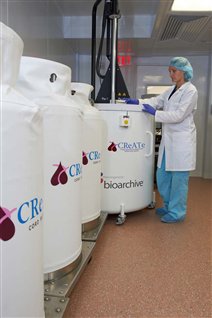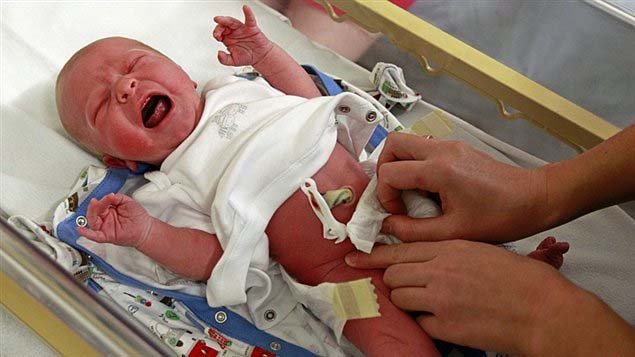They are a rich source of stem cells and important in the treatment of an increasing number of diseases or medical conditions. In decades past however, umbilical cords from newborns were considered merely bio- waste and disposed of.
Now however, umbilical cord-blood banks have been established to save the stem cells for use in later treatments. Although private banks have been established for several years, today marks the opening of the first public cord-blood bank in Canada.
Dr Clifford Librach is an expert in reproductive technology at the Sunnybrook and Women’s College Hospitals in Toronto, and is the founder and director of the CReATe Family cord-blood bank.
Listen
In simplistic terms, stem cells have the ability to transform into any type of cell in the body, becoming for example a bone-marrow cell, or a liver cell and so on. They have become increasingly useful in replacing damaged cells in the body in treatments for leukemia, lymphoma or aplastic anemia. As research continues, so to does the use of stem cells in treating more and more diseases.
For a processing and storage charge, private “family” cord-blood banks store cord-blood for those who want to have a ready source of stem cells for the newborn, should the baby develop a treatable disease or condition later in life. He or she then has access to their own stem cells, greatly facilitating treatments. The charge is generally a few hundred dollars initially, and then approximately 100-dollars annually for the cryogenic storage.
Until today there was no public cord-blood bank in Canada, the only G-8 country not to have a national source of cord-blood stem cells available to the public.
The Canadian Blood Services which oversees the new bank says some 1,000 Canadians are currently waiting for life-saving stem cell transplants .
This public cord-blood bank will enable anyone who needs stem cells to seek and access matching stem-cells at the bank. Stem cells in cord blood are easier to transplant and may be the only answer for ethnically diverse people who are under-represented on the OneMatch Stem Cell and Marrow Network, according to Canadian Blood Services.

The Ottawa General Hospital will begin accepting cord-blood donations as of today, and eventually healthy women 18 years of age or older will be able to donate umbilical cord-blood as well at hospitals in Brampton Ontario, Edmonton Alberta, and Vancouver British Columbia.
The national-level public bank became possible following announcement in March 2011 by provincial and territorial ministries of health (except Québec) of a combined investment of $48 million, including $12.5 million in fundraising, and this new umbilical cord-bank has already received a $6.3 million boost in charitable donations.
The National Public Cord Blood Bank is aiming to reach a target of 18,000 donated cord blood units over six years.
CANADIAN BLOOD SERVICES- National cord blood bank







For reasons beyond our control, and for an undetermined period of time, our comment section is now closed. However, our social networks remain open to your contributions.